I think it’s safe to say that Studio Ghibli films have played an integral part in my childhood. Maybe they were part of your childhood as well.
Back in the day, my family owned VHS tapes of Hayao Miyazaki and Isao Takahata’s works, and we replayed them over and over again every year. I learned from their thematic movies the issues behind technological progress, environmental destruction, and human greed. I hailed Totoro as my hero and Cat Bus as my dream “car”.
So, yes– I’m a big fan of Ghibli. And when their most recent film Omoide no Marnie came out in July, I jumped on board and saw it on its opening day.
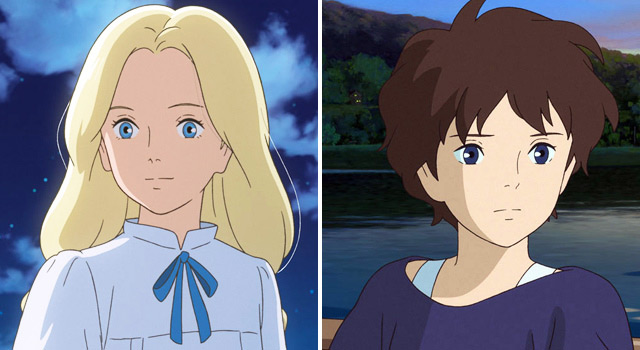
Marnie garnered some attention even before it was released– it was made without involvement by Miyazaki and Takahata, the two primary directors at Ghibli. Many became a bit confused about the film after the release of a very interesting (perhaps suggestive to some) trailer. Moreover, with Miyazaki declaring his retirement from feature films after The Wind Rises, many began to debate about Marnie and Yonebayashi as potential “successors” to the animation giant.
After seeing Marnie in theaters, I thought it’d be interesting to discuss Ghibli’s future a bit, by discussing how Marnie fared (in my opinion), the future of other prominent animators from Ghibli (namely Miyazaki’s son, Goro), and where Ghibli might be headed for in the long run, after rumors arose that it was going to stop production of new movies.
Marnie – A New Beginning for Ghibli?
Omoide no Marnie, or “When Marnie was There”, is Studio Ghibli’s most recent work following Hayao Miyazaki’s The Wind Rises and his intent to retire from making feature-length animation. Marnie was directed by Hiromasa Yonebayashi, who has been involved in Ghibli works and directed The Secret World of Arrietty back in 2010.
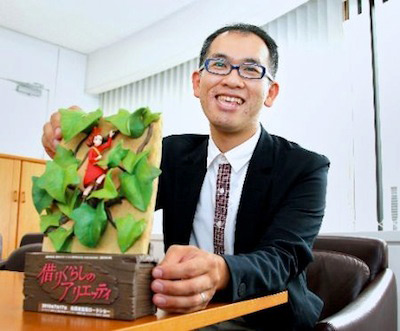
Marnie marks somewhat of a new beginning for Studio Ghibli, as it was created without the involvement of Miyazaki and Takahata, the two giants at the studio. With Miyazaki retiring from directing movies after the release of his last film, The Wind Rises, a lot of people had mixed anticipations about Marnie. What will Ghibli create next, now that Miya-san was gone? How will Yonebayashi try to recreate the world of Marnie, originally a British childrens book? How will he try to localize it to fit Japanese animation? Will it, if ever, live up to the quality of Miyazaki and Takahata’s works?
Since I never read the book that it was based on, I was pretty clueless and didn’t know a thing about what the movie was going to be about. For the longest time, I relied on the short snippet found on their home page, which mentioned the movie being about a friendship between two girls. Okay, so two heroines instead of one. That’s about all that I grasped about the movie.
I was pretty surprised when the first poster came out– with a fair-skinned, blond-haired girl in the poster with the phrase, “Anata no koto ga daisuki.” on the side. The phrase can loosely be translated as, “I really like you”.
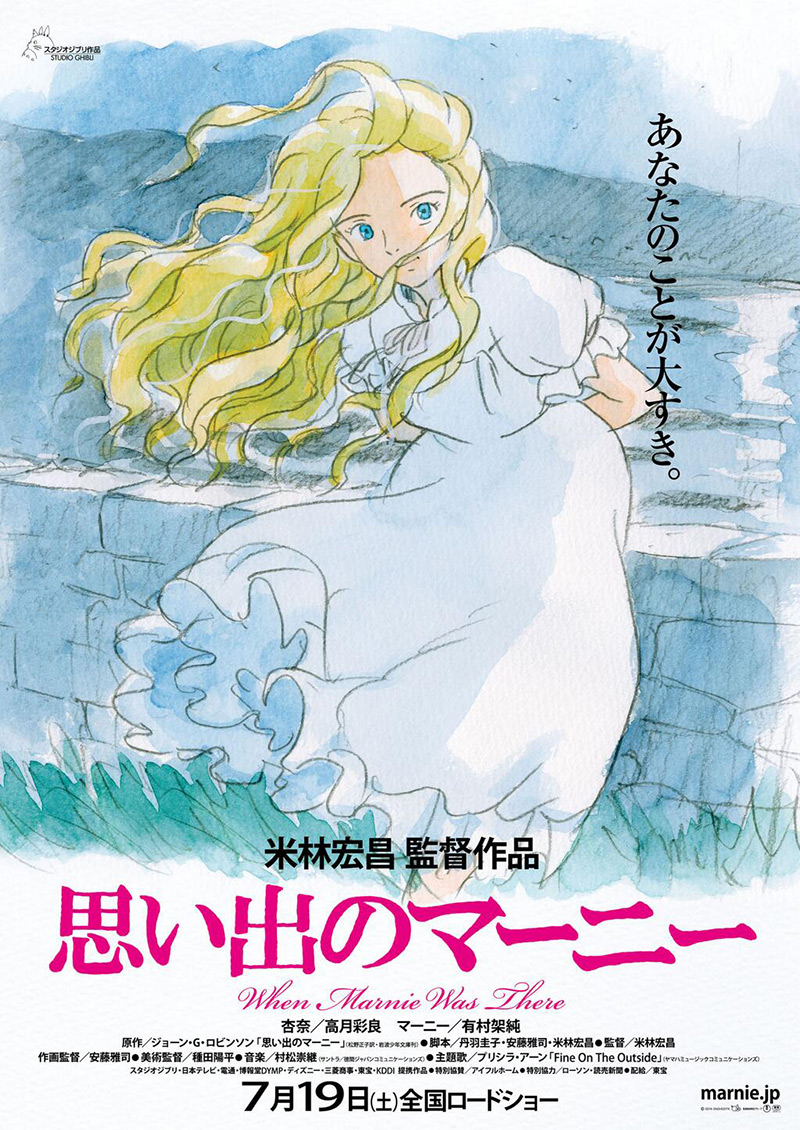
Was this film going to include elements of romance? The only available summary found on the movie homepage indicated that it was about a girl, who travels to Hokkaido to recuperate from her illness, while meeting a mysterious girl, Marnie, at a deserted mansion across the marsh.
And then the official trailer came out.
Japanese people online were taken back by the rather touchy-feeliness between Anna and Marnie– Anna can be seen blushing from time to time, while at a certain point they seem to declare their love and affection for each other. Is Ghibli making a movie with homosexual elements in it!? Japanese netizens started commenting all over the interwebs on threads and discussion boards, like the following…
- 思い出のマーニーが!百合もんなら!私は!1人で見に行きます!親とは絶対見に行きません!
- If Omoide no Marnie is a lesbian-themed movie! Then I’m going to go see it by myself! I won’t go see it with my parents!
- マーニー百合かよ観に行かなきゃいけなくなるだろ
- Marnie’s a lesbian film? Now I gotta go see it.
- 思い出のマーニーって百合とかではないよね?ジブリで百合とかないよね?あなたのことが好きって友達としてだよね?ねっ?
- Omoide no Marnie isn’t a lesbian-themed movie, right? Ghibli won’t make a lesbian movie right? “I really like you” (on the poster) just means as friends, right? Right!?
Some of these comments, in my opinion, got out of hand and were just too exaggerated– some even seemed upset as if Ghibli was setting their foot into some terrible taboo. Some comments were just, to put it simply, homophobic. Japanese netizens sounded worried that Marnie was going to be about a lesbian love between Anna and Marnie. Though some of these comments found online were questionable, it grabbed the attention of others who now really wanted to find out what the film was about.
Marnie – Treading New Waters Away From Magic
I went into the theaters knowing very little about the original book it was based on and having read some reactions by Japanese netizens online about the trailer. All in all, I enjoyed and loved the movie, though I do think it swayed far from the themes and styles of past Ghibli films.
It’s a touching movie, and in my opinion I think Yonebayashi did a great job building up sentiments throughout the film. It was mysterious, and I got confused, then emotional, sad, happy– warm and fuzzy feelings took over when the end credits rolled and Priscilla Ahn’s soft melody began to play. I got teary eyed, so did my friend who came with me, and an old gentleman next to me was sniffing up a storm.
However, Marnie is no ordinary Ghibli film. In the past, Miyazaki’s films appear to have had shared thematic elements, like environmentalism, the greed of mankind, coming of age, and loss of innocence. His movies were widely known by many for its fantasy-feel, a whole different kind of world with magical creatures, cities, and people interacting on the silver screen.
But one of the reasons why Marnie felt so different was that it lacked that fantasy feel; instead, the world that Marnie takes place in is very raw and realistic. Anna, one of the main characters, is a teenage girl, and like any teenage girls she carries a myriad of issues, worries, and frustrations. Her background is quite complicated, which strains her relationship with not just her family but friends and others around her. I found myself reflecting about my own teenage-hood, and to a certain extent, I think she’s a character that many people- adults included- can relate to. Though it might not be all magical, Marnie does have elements of reality blurring in it with the “dream world”, but it doesn’t go overboard to cover up some real-life issues and problems that the characters like Anna face throughout her life.
A good movie to watch before going into Marnie is The Secret World of Arrietty, also directed by Yonebayashi in 2010. Arrietty in a way follows Miyazaki and Takahata’s concept of magic and fantasy; the film’s meticulous and beautifully-detailed animation and background artwork sweeps the audience right into the world of the borrowers. I watched the film right before I went to see Marnie, and the contrast between the two was quite vivid. To put it simply, Arrietty is magical, but Marnie more grounded on real-world situations and issues.
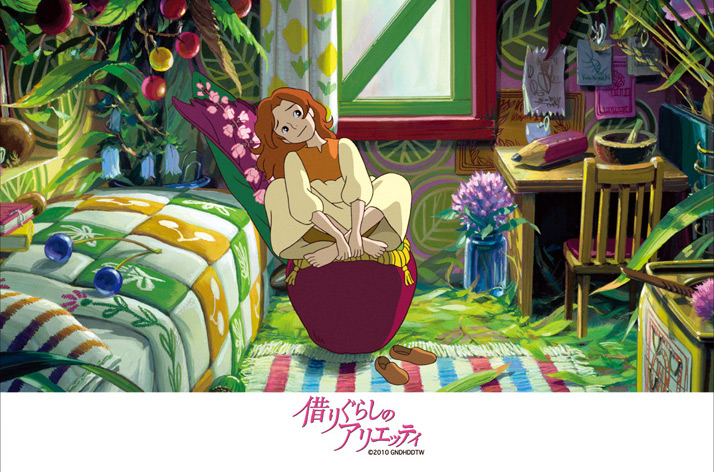
And the whole spiel about it being about a “homosexual romance”? I think netizens failed to understand yet another concept that I think exist across most Ghibli films– the idea of love- whether it be romantic, or friendship and affection- transcending a certain barrier. For Princess Mononoke, affection between Ashitaka and San transcended something close to identity and affiliation. For Spirited Away, Chihiro and Haku transcended dimensions between the real and spirit world. For Ponyo, well… species I guess! A similar idea can be seen in Marnie, with Anna and Marnie’s love transcending time. I’ll just leave it there since I don’t want to spoil too much of the film!
Meanwhile with Goro…
Meanwhile, someone else that had affiliation with Ghibli before he was engaging himself in a different challenge.
Goro Miyazaki, the son of Miyazaki himself, has recently started working on a TV-animation series titled Sanzoku no Musume Ronia, or Ronia the Robber’s Daughter. Like Marnie, it’s based on a children’s book by Astrid Lindgren, who also wrote other prominent works like Pippi Longstocking.
But Goro isn’t just doing something new. His Ronia is made using 3D CG animation.
It was Toshio Suzuki, the producer at Ghibli, who suggested Goro take a leave from Ghibli a bit and produce something different– to challenge himself and to prove that he was capable of creating good quality animation. The new TV series is created with the help of Polygon Pictures using 3D CG animation– something that hasn’t been done by Studio Ghibli. On the most recent Ronia website, Suzuki notes:
Ronia the Robber’s Daughter is a project we debated multiple times at Ghibli. Can Goro do a goob job away from Ghibli and his father? I think we’re all interested to know that. After all, I’m the one that recommended that he do so.
Goro, who worked as a landscape architect, joined his father’s industry when he was asked to direct Tales of Earthsea in 2006. Perhaps you can see this from some reviews on websites like Rotten Tomatoes, but Goro’s first work was not exactly the best. Tales of Earthsea disappointed a lot of Japanese audiences, who perhaps anticipated too much that Goro would have inherited his father’s skills. His second work From Up on Poppy Hill definitely faired A LOT better, but perhaps his father’s role as screenplay writer for the movie may have played some role in salvaging Goro from the splat he made in his first work.
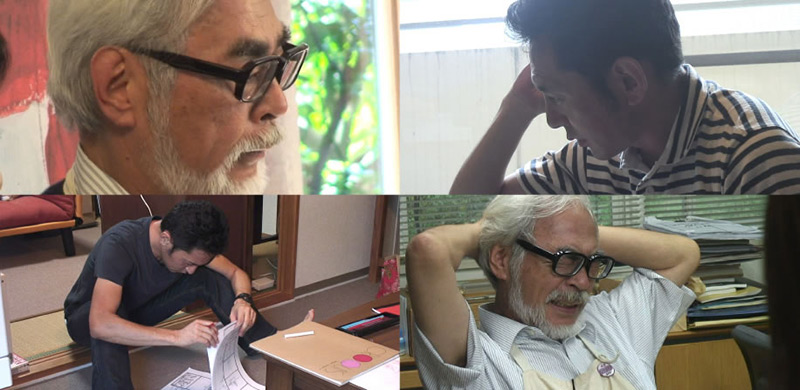
Though Yonebayashi might have earned enough credit and respect for people to consider him as the next leader of Ghibli, it’ll be interesting to see how Goro’s new TV series will turn out, and if he’ll ever make another feature-length film.
Taking a Break
Though Yonebayashi and Goro have been working hard creating new works, Ghibli faces yet another problem– whether or not to continue producing works.
A rumor arose recently that Ghibli was going to shut down its productions segment– and unfortunately, parts of it came true.
Suzuki announced publicly on a TV news segment that while Ghibli was not completely shutting down, it was going through a process of restructuring. Suzuki commented that although they were going to take a leave from making feature-length films for a while, they were considering creating short-animation films.
But for Ghibli fans like myself, them taking a leave poses a lot of questions– will Ghibli ever come back to make feature-length films? Who’ll take the helm that time? Will Goro ever come back to Ghibli to make a feature?
Only time will tell…
So… Where to From Here?
In the end, it looks like we’ve avoided the worst, which was Ghibli shutting down completely. Though the most successful animation production company in Japan will continue to be around, it looks like they’ve hit a point of no return– restructuring is necessary, especially when Ghibli films are extremely pricey to make. After all, they don’t outsource their animation work to places with cheaper wages, which makes it costly for them to produce each film. Telegraph commented that The Wind Rises has “yet to turn profit” and Takahata’s recent work Tale of Princess Kaguya was considered a “flop” because of how expensive it was to produce.
On the other hand, Suzuki has also mentioned some optimistic news for all– though Miyazaki retired from making features, he was still interested in making and producing something new, perhaps something along the lines of short-length movies for their Studio Ghibli Museum.
With Marnie’s release, it’s become evident that various people within Ghibli are now heading off to do creative new things– Yonebayashi created a Ghibli film with a different touch, Goro was off doing his own thing away from his father, while his father apparently expressed his intent to create something again. With different people from Ghibli going off in various directions and challenging themselves in unique manners, it’ll be quite interesting to keep an eye out on Japan’s most infamous animation house and what they’ll churn out next.
